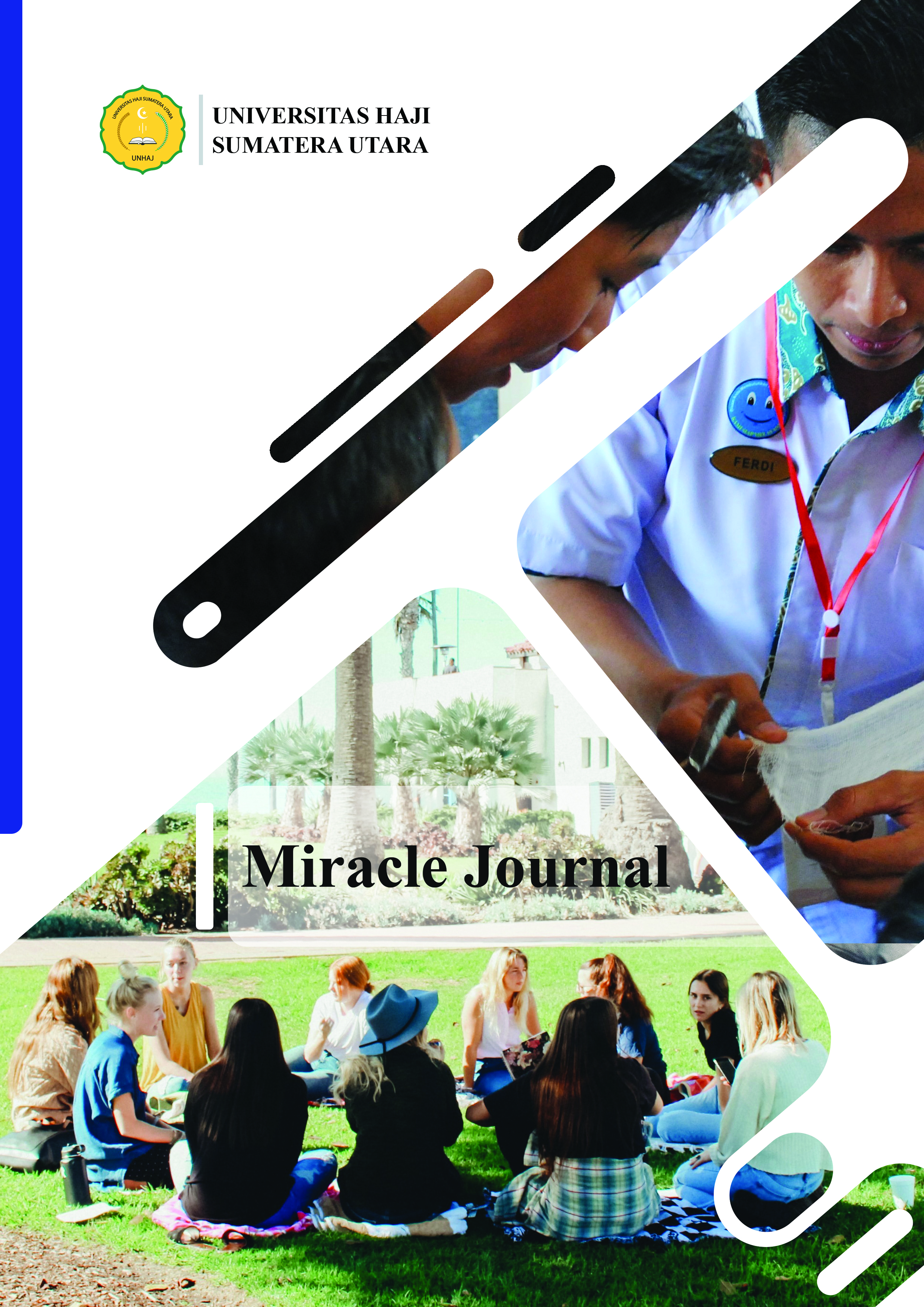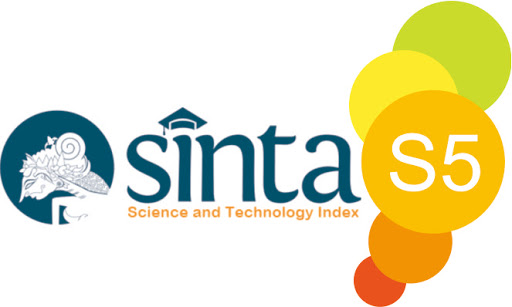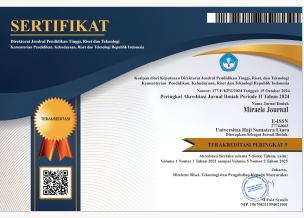PENERAPAN THEORY OF PLANNED BEHAVIOR UNTUK MEMAHAMI NIAT PETANI DALAM PENGGUNAAN PESTISIDA
PENERAPAN THEORY OF PLANNED BEHAVIOR UNTUK MEMAHAMI NIAT PETANI DALAM PENGGUNAAN PESTISIDA
DOI:
https://doi.org/10.51771/mj.v4i1.1003Keywords:
Keyakinan Perilaku, Keyakinan Normatif , Control BeliefsAbstract
Intervensi pemerintah dalam penggunaan pestisida telah sering dilakukan akan tetapi petani cenderung menggunakan pestisida secara berlebihan dan tidak sesuai aturan. Penelitian ini bertujuan untuk menganalisis model Theory Planned Behaviour pada petani dalam penggunaan pestisida pada petani cabai merah di Kabupaten Deli Serdang. Pengambilan sampel menggunakan tenik snowball sampling dengan jumlah 46 partisipan. Data diperoleh dari wawacara mendalam, FGD dan dianalisis secara kualitatif menggunakan analisis tematik. Hasil menunjukkan bahwa banyak faktor yang memicu petani untuk selalu menggunakan pestisida sintetik sebagai solusi masalah pertanian meliputi faktor internal (elemen TPB) maupun faktor eksternal (pengawasan pemerintah dan peranan pemasok pestisida) serta kondisi lingkungan. Berdasarkan hal tersebut maka perlu dilakukan pendekatan yang melibatkan kompleksitas keseluruhan sistem secara menyeluruh dari segenap masyarakat secara berkesinambungan
References
Pananurak, P. (2013). Empowering Farmers to Reduce Pesticide Risk.FAO-RAP: Bangkok
Sharma, A., Kumar, V., Shahzad, B., Tanveer, M., Sidhu, G. P. S., Handa, N., & Thukral, A. K. (2019). Worldwide pesticide usage and its impacts on ecosystem. SN Applied Sciences, 1, 1-16
Sarkar, S., Gil, J. D. B., Keeley, J., & Jansen, K. (2021). The use of pesticides in developing countries and their impact on health and the right to food. European Union.
Alavanja, M. C. (2009). Introduction: Pesticides use and exposure, extensive worldwide. Reviews on environmental health, 24(4), 303-310.
Hashemi, S. M., Hosseini, S. M., & Hashemi, M. K. (2012). Farmers’ perceptions of safe use of pesticides: determinants and training needs. International archives of occupational and environmental health, 85, 57-66
Calliera, M., Berta, F., Galassi, T., Mazzini, F., Rossi, R., Bassi, R., & Capri, E. (2013). Enhance knowledge on sustainable use of plant protection products within the framework of the Sustainable Use Directive. Pest management science, 69(8), 883-888
Jallow, M. F., Awadh, D. G., Albaho, M. S., Devi, V. Y., & Thomas, B. M. (2017). Pesticide risk behaviors and factors influencing pesticide use among farmers in Kuwait. Science of the total environment, 574, 490-498
Pawestri, I. N., & Sulistyaningsih, E. (2021). Neurobehavioral performance of Indonesian farmers and its association with pesticide exposure: a cross-sectional study. Clinical Epidemiology and Global Health, 11, 100754
Fan, L., Niu, H., Yang, X., Qin, W., Bento, C. P., Ritsema, C. J., & Geissen, V. (2015). Factors affecting farmers' behaviour in pesticide use: Insights from a field study in northern China. Science of the Total Environment, 537, 360-368
Jagtap, A., Deshmukh, S. S., Warwadekar, S. C., & andNikita Kadaskar, P. K. (2022). Modelling farmers intention regarding pesticides application in mango: An empirical analysis with extended theory of planned behaviour (TPB)
Hafwenny, Y., Nurmaini, N., & Marsaulina, I. (2020). Age, use of self-protective equipment, personal hygiene, and cognitive functions of farmers. Berita Kedokteran Masyarakat, 36(7)
Ningsih, R., & Wirapuspita, R. (2017, February). Farmer Empowerment In Reducing Exposure and Farmer Empowerment in Reducing Exposure and Residual Pesticides In Vegetables: A Cross Sectional Study At Kutai Kartanegara District, Indonesia. In Proceedings of the International Conference on Applied Science and Health (No. 1, pp. 357-362)
Pan, Y., Ren, Y., & Luning, P. A. (2021). Factors influencing Chinese farmers’ proper pesticide application in agricultural products–A review. Food Control, 122, 107788
Mahyuni, E. L., Yustina, I., & Sudaryati, E. (2017). Safety talk and check to prevent pesticide toxicity among farmer. Int J Public Heal Sci, 6(4), 293-8
Meirindany, T., Indirawati, S. M., & Marsaulina, I. (2021). Hubungan Pajanan Pestisida Dengan Efek Neurobehavioral Pada Petani Cabai Merah Di Kecamatan Beringin. Jurnal Health Sains, 2(3), 410-419.
Bondori, A., Bagheri, A., Damalas, C. A., & Allahyari, M. S. (2018). RETRACTED: Use of personal protective equipment towards pesticide exposure: Farmers' attitudes and determinants of behavior.
Shi, H., Wang, J., Huang, R., Zhao, J., Zhang, Y., Jiang, N., ... & Xu, X. (2021). Application of the extended theory of planned behavior to understand Chinese students’ intention to improve their oral health behaviors: a cross-sectional study. BMC Public Health, 21, 1-9.
Pan, Y., Ren, Y., & Luning, P. A. (2021). Factors influencing Chinese farmers’ proper pesticide application in agricultural products–A review. Food Control, 122, 107788.
Badan Pusat Statistik Sumatera Utara. (2022). Statistik Tanaman Holtikultura Provinsi Sumatera Utara. Badan Pusat Statistik : Medan
Kementerian Kesehatan RI. (2012). Pedoman Penggunaan Insektisida (Pestisida). Direktorat Jenderal Pengendalian Penyakit dan Penyehatan Lingkungan. Jakarta
Zhang, L., Li, X., Yu, J., & Yao, X. (2018). Toward cleaner production: what drives farmers to adopt eco-friendly agricultural production. Journal of cleaner production, 184, 550-558
Zhao, Q., Pan, Y., & Xia, X. (2021). Internet can do help in the reduction of pesticide use by farmers: Evidence from rural China. Environmental Science and Pollution Research, 28, 2063-2073
Wang, J., Chu, M., Deng, Y. Y., Lam, H., & Tang, J. (2018). Determinants of pesticide application: an empirical analysis with theory of planned behaviour. China Agricultural Economic Review, 10(4), 608-625
Macheka, L., Spelt, E. J., Bakker, E. J., van der Vorst, J. G., & Luning, P. A. (2018). Identification of determinants of postharvest losses in Zimbabwean tomato supply chains as basis for dedicated interventions. Food Control, 87, 135-144
Downloads
Published
Issue
Section
License
Copyright (c) 2024 Tina Meirindany

This work is licensed under a Creative Commons Attribution-ShareAlike 4.0 International License.










